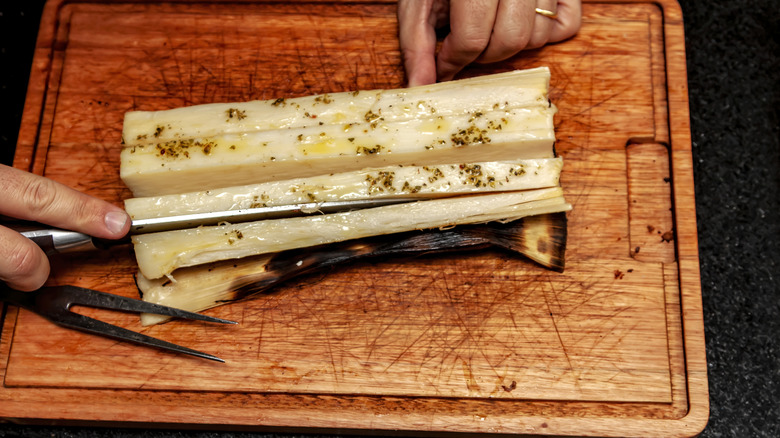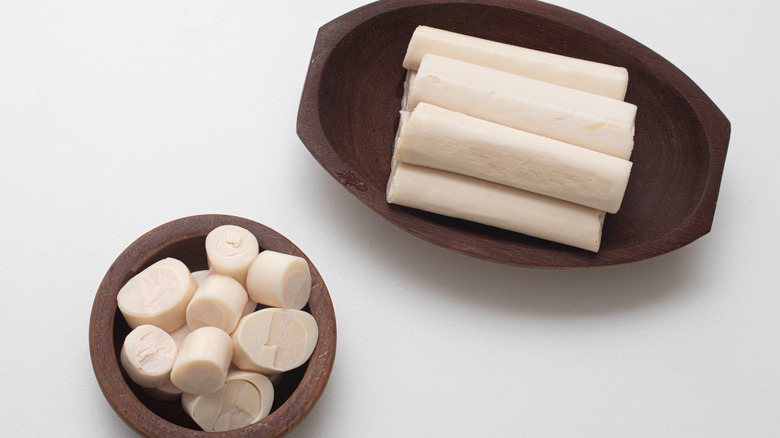How To Use Hearts Of Palm To Make Vegetarian-Friendly Crab Legs
Did you know you can still enjoy the flavors of the sea as a plant-based eater? From seafood boils to sushi, food enthusiasts are innovating unique and equally flavorful ways to prepare and serve produce to take center stage. And when it comes to whipping up vegetarian-friendly "crab legs," there is one plant that shines: hearts of palm. With their delicate flavor and fibrous texture, they offer an ingenious alternative to conventional crab meat. When properly prepared with the right seasonings, these versatile palm shoots can mimic the succulent and flaky texture of crab without contributing to the environmental determinants of capturing sea life for consumption.
If you're using canned varieties of hearts of palm, which you can usually find in any grocery store alongside other canned vegetables, give them a light rinse to remove any residual briny flavor before shredding them. The natural structure of these shoots makes them easy to pull apart, which can be quite satisfying and similar to the feeling of pulling on string cheese. These delicate, creamy shreds are the perfect vessel to carry classic seafood seasonings. You can boost the oceanic, umami flavors by adding nori flakes or kelp powder; their extra boost of iodine is also a welcome, nutritious addition. Tap into the versatility of your plant-based "crab" by shaping it into crab cakes, rolling into sushi, adding to a plant-based seafood boil, serving in a sandwich, and much more.
Origins and traditional uses of hearts of palm
The humble hearts of palm have been a cherished vegetable spanning diverse cuisines. The edible portion of hearts of palm is the tender inner core, derived from palm tree species that are native to Central and South America, like coconut palm, sabal palm, peach palm, and açaí palm, to name a few. The practice of harvesting hearts of palm has been traced back to the local Mayan communities, who counted on this sturdy, drought-resistant crop for a reliable source of nutrition.
In preparing and serving hearts of palm, its subtly nutty and mildly vegetal flavor is complemented by other ingredients like produce, flavorful dressings, aromatic spices, and seasonings. In Brazilian cuisine, hearts of palm (palmito) breathe life into vibrant, zesty salads with a vinaigrette-based dressing, or in hearty stews. Similarly, in regions like Ecuador, hearts of palm are key ingredients in "ceviche de palmito," where its flavor and texture shine in a tangy, citrusy marinade.
Several Latin American preparations are as simple as grilling hearts of palm with a drizzle of olive oil and a squeeze of lime juice. Many varieties found in the United States are derived from smaller palm trees in Florida called "palmettos," which are a close relative to the Floridian specialty known as swamp cabbage. In today's era of constant food innovation and exploration, let the journey of hearts of palm inspire you to delve into its culinary histories and novel creations in our modern day.

